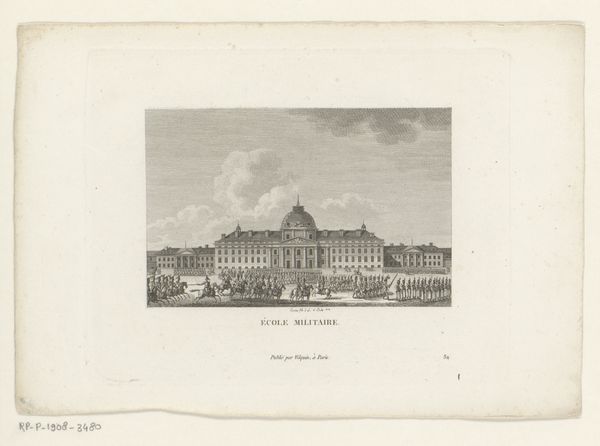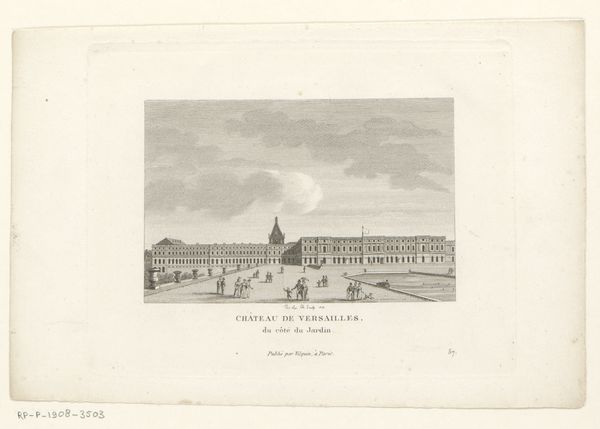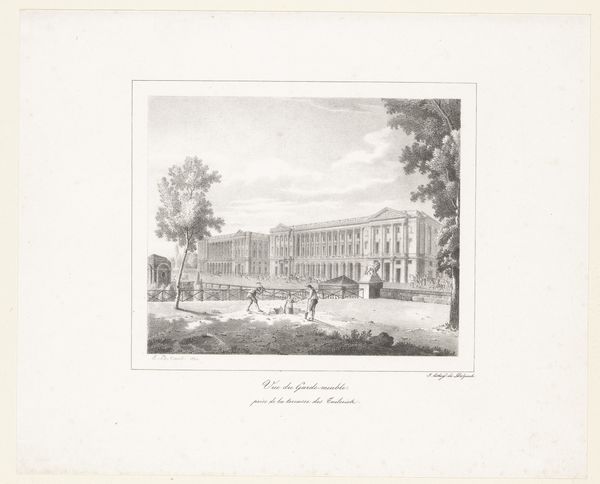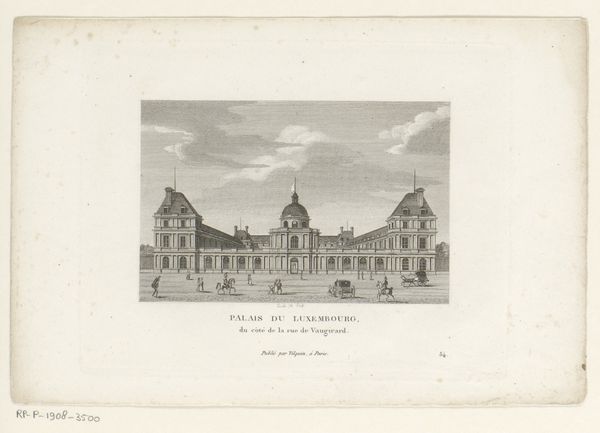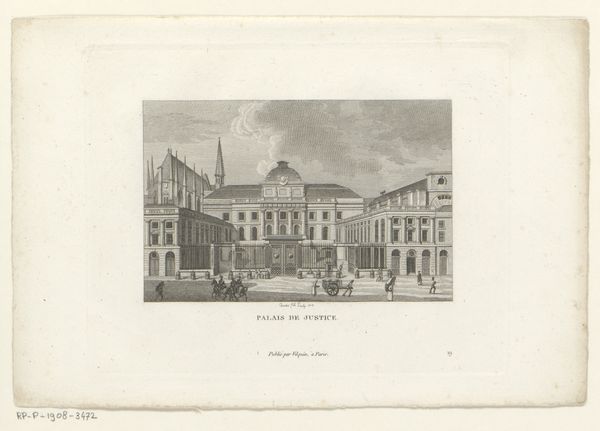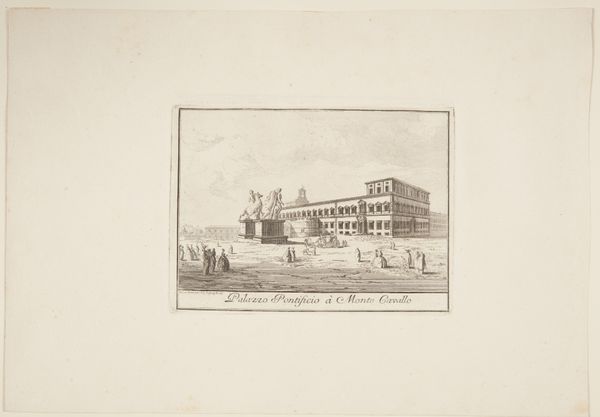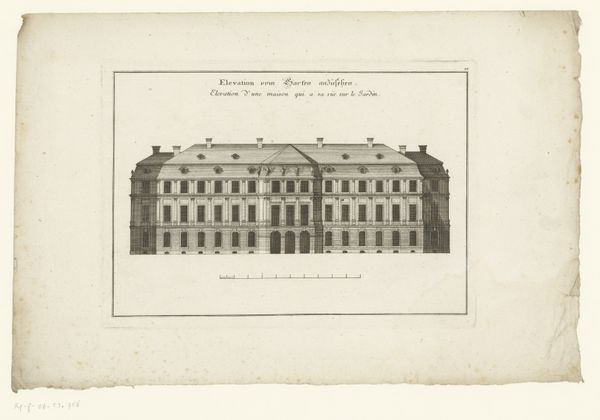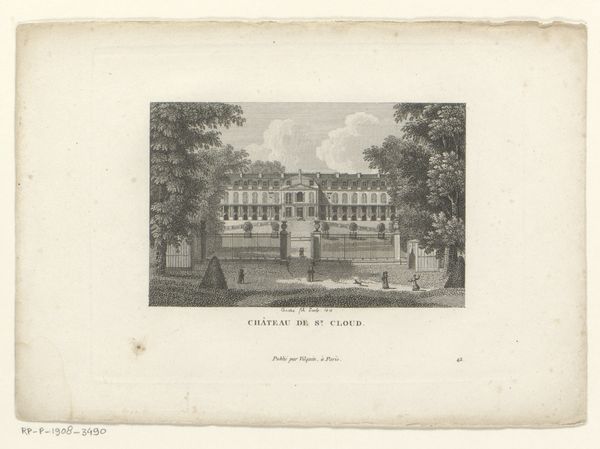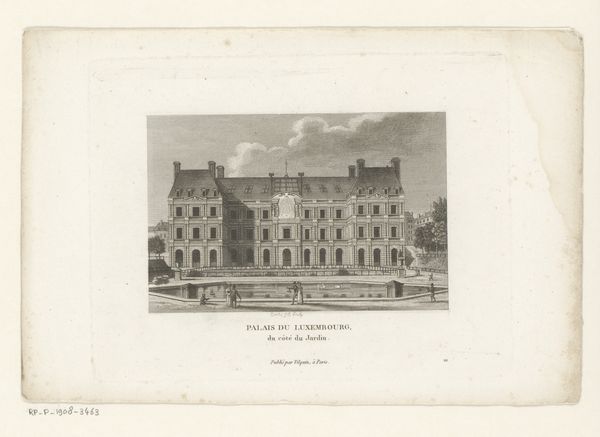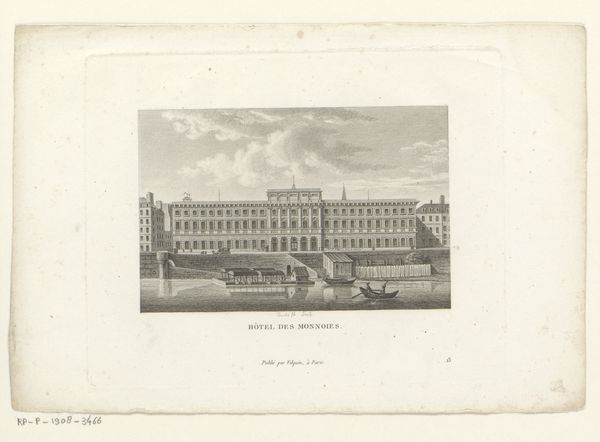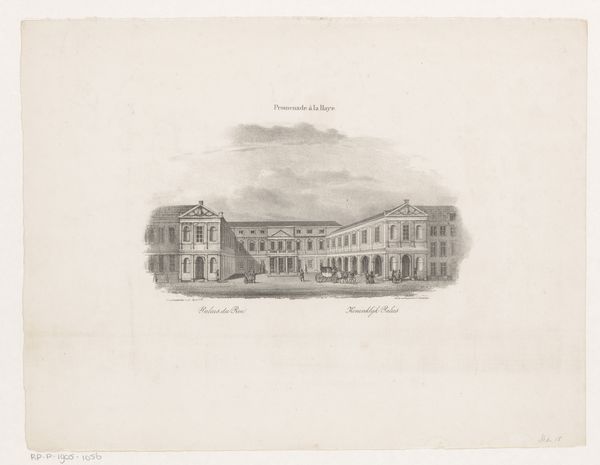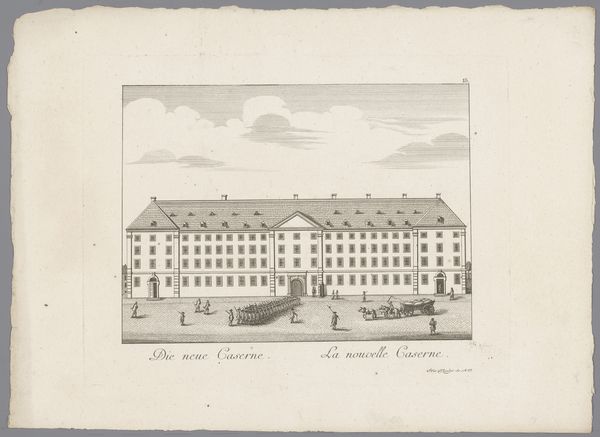
print, engraving
#
neoclacissism
# print
#
cityscape
#
history-painting
#
engraving
Dimensions: height 124 mm, width 156 mm
Copyright: Rijks Museum: Open Domain
Curator: It has a quiet, almost solemn quality, doesn’t it? The gray tones, the meticulous lines. Editor: Yeah, it’s like stepping into an old photograph, all sepia tones and whispers of history. A bit imposing, too. What is this? Curator: This is a print called "View of the Faculty of Medicine in Paris" by François Louis Couché, created in 1818. It's currently held at the Rijksmuseum. This print reflects the prevailing Neoclassical art movement, fitting squarely into an age obsessed with order and reason. It's history on paper! Editor: Makes sense; it’s incredibly ordered, almost rigid. All those straight lines. It’s like the building is posing for a formal portrait. Even the clouds seem meticulously placed. I can almost smell the ink and old paper. Curator: Well, this building isn't just bricks and mortar. Medicine itself in the 19th century, particularly in Paris, was undergoing a massive transformation from speculative art to an empirical science. The building, therefore, becomes emblematic of that shift towards institutionalized knowledge and power structures, particularly, I would note, in terms of medical discourses relating to women's bodies. Editor: Absolutely! So it's not just a building, it's a statement! Look at the figures, so tiny in comparison. It’s like they're submitting to this grand, authoritative institution, all under the sky of rationalism. Curator: Precisely. And let’s not forget that printmaking made such images widely accessible. What kind of impression would this have on the public back then? Did it inspire trust in the burgeoning scientific approach, or perhaps provoke fears regarding an emerging power of scientific authority? Editor: It probably did both, honestly. There’s something unnerving about it too, right? Like a promise and a warning, wrapped into one neat package of perfect perspective. It's so well done, so pristine... But at what cost? Curator: Those are exactly the kinds of questions that emerge when we begin to unpack works like this! Seeing artwork as products of the social and political environments they come from opens them to more complete scrutiny. Editor: Yes, I agree entirely. What once felt a bit stiff now vibrates with meaning! So much more to chew on than first meets the eye. Thanks!
Comments
No comments
Be the first to comment and join the conversation on the ultimate creative platform.
